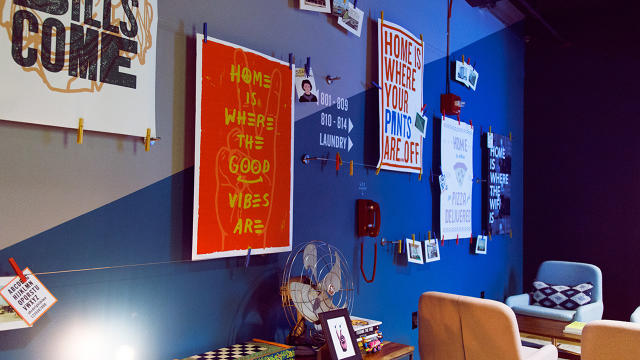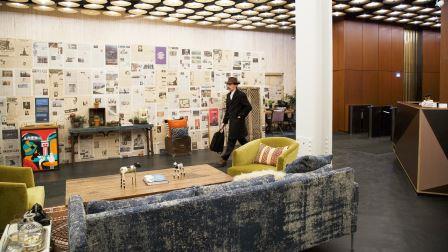WeWork Quietly Opens Hotel Rooms In New York City
When the rent-a-desk giant WeWork opened a flexible housing spin-off, WeLive, this January, it advertised pay-by-the-month furnished rentals for transient millennials. The apartment complex in the financial district of Manhattan comes complete with an arcade inside of the laundry area and an app for organizing community events.
That same building has now added another option to its menu: hotel rooms.
For $235 per night, visitors last week could rent a “studio plus” apartment with two beds, according to WeWork’s website. A room with four beds cost $495 per night. The rooms are similar to those that are offered to long-term WeLive residents, small apartments with private kitchens and bathrooms.
A WeWork spokesperson confirmed that the company had begun renting rooms for short-term stays, saying that only a small number of rooms are available to the public. The other rooms can be rented daily or weekly at a discounted rate by WeWork’s members, which at last count numbered more than 50,000 worldwide.
New York City bans short-term rentals in residential buildings for shorter than 30 days, which has been a problem for Airbnb and its competitors. But the 39 units on three floors inside of WeLive are designated for hotel use, and the building is located in a district that allows both residential and commercial use.
“It is essentially a hotel,” says Andrew Paget, an building code and zoning specialist at KM Associates of the way the floors are designated. On floors on which it offers short-term rentals, he says, WeLive is required to follow the same safety, Americans with Disability Act compliance, and other legal standards as similarly designated hotels.

Extended-stay hotels have long provided the same options in the city, offering both short-term or longer-term room rentals. A Marriott Residences within a 10-minute walk of WeLive, for instance, charged $161 per night for a studio apartment with a kitchen and king bed on the same day WeWork charged $235 for a studio plus room.
WeLive brands its more expensive rooms far differently than comparable hotel options, however. It advertises rooms that represent “a new way of living built upon community, flexibility, and a fundamental belief that we are only as good as the people we surround ourselves with.” In that sense, the company’s hotel rooms are part of the members-only club it has been building since its founding in 2010.
But it’s hardly unique. Soho House, a 40,000-member private club with 15 locations around the world, has a similar business. Like WeWork, the company attaches its membership to a bigger idea, describing its members as people who “have something in common: namely, a creative soul.” Members pay a monthly fee to access events and facilities—such as a screening room, a swimming pool, and meeting space—and additional fees to rent rooms. In its New York City location, the club has 30 hotel rooms, just nine fewer than WeWork has inside of WeLive. To run WeLive, WeWork has hired Michael Gross, the former CEO of Morgans Hotel Group, which operates 14 hotels in four countries.
What distinguishes WeWork is its sheer size. In financial documents that leaked last year, WeWork, which is valued by its investors at $16 billion, estimated that it would house 34,000 people in 69 locations by the end of 2018. WeWork’s New York City WeLive location has 20 stories dedicated to small apartments whose residents also have access to large common spaces. At least 12 of those floors are currently operating and, according to a WeWork spokesperson, 100% of the longer-term rental units are full. The company has another “coliving” building in the Crystal City neighborhood, near Washington D.C. As of 2014, WeWork expected WeLive to account for 21% of its annual revenue—$605.9 million—by 2018.
Fast Company , Read Full Story
(31)


